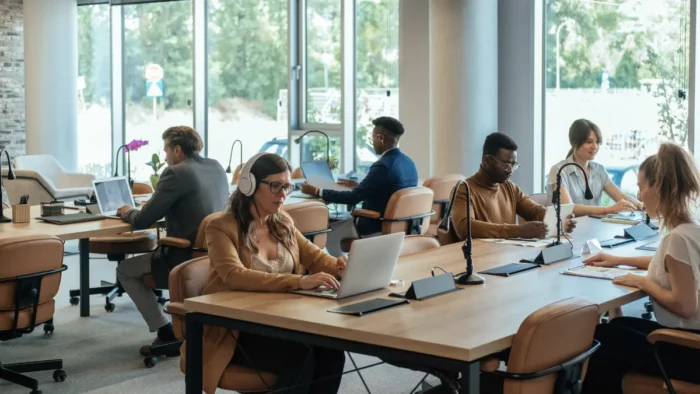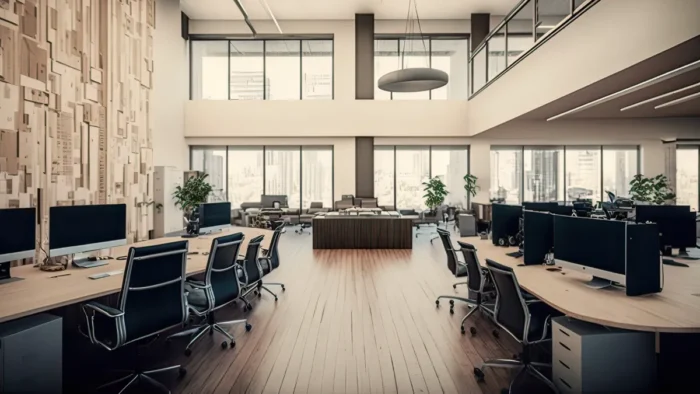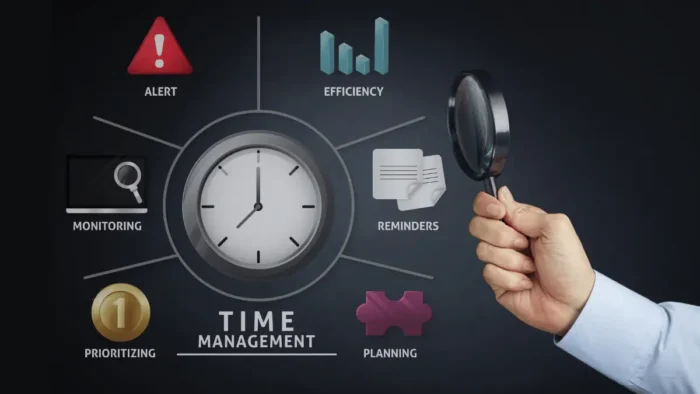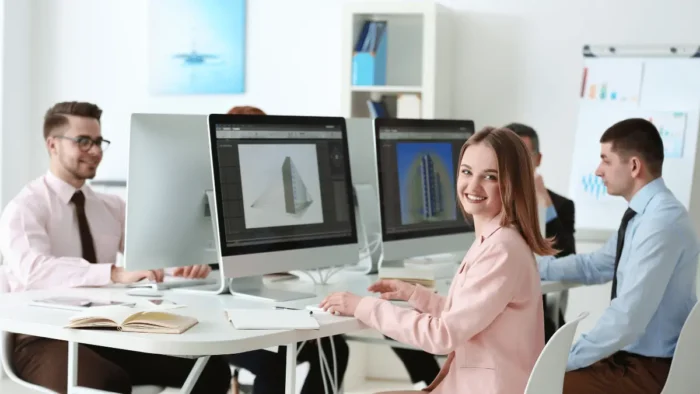Flexible workspaces, as the name suggests, encompass office environments that adapt and evolve according to the needs of the workers. These spaces break away from the traditional, rigid office layouts by incorporating movable furniture, technology, and versatile work areas. They facilitate a plethora of work styles, fostering collaboration and innovation while also providing areas for focused individual work.
Today’s professionals juggle diverse tasks, collaborate across time zones, and frequently transition between focused and collaborative work. In this context, the ability to mold the workspace to suit varying needs is not just a luxury. It’s a requirement for fostering productivity, creativity, and employee well-being.
The Concept Of a Flexible Workspace
At its core, designing an office space with flexibility in mind involves creating an environment that can be easily reconfigured to support different types of work and collaboration. It’s not just about movable desks or chairs; it’s an ideology that places the ever-changing needs of the workforce at the forefront.
Co-Working Spaces
Imagine walking into a vibrant office with an amalgamation of freelancers, entrepreneurs, and professionals from different companies working side by side. This is the essence of a co-working space. These spaces often offer hot desks, private offices, and common areas, fostering networking and the exchange of ideas among different professionals.
Shared Offices
Picture a law firm and a tech startup sharing the same office space. They each have their designated areas but share common facilities like the reception, kitchen, and meeting rooms. Shared offices allow businesses to save on costs while still maintaining a professional environment.
Hot Desking
Hot desking is a concept where employees do not have assigned desks and choose an available workspace when they come in. This approach caters to the modern, mobile workforce and can also foster unexpected collaborations.
Remote Work Options
The pandemic catapulted remote work into the spotlight. It showed companies and employees alike that work could be done efficiently from anywhere. Some employers have embraced remote work as a permanent option, allowing employees to choose where they want to work.
Multi-Purpose Spaces
Multi-purpose spaces are highly adaptable areas within the office environment. Think of a space that functions as a conference room in the morning, a collaborative brainstorming area in the afternoon, and an after-hours events space. These spaces use modular furniture and technology to effortlessly transition between functions.
The flexible workspace is an evolutionary answer to the shifting paradigms of the modern workforce. These adaptable environments are paving the way for increased productivity, collaboration, and employee satisfaction.

Adaptable Designs For Flexible Workspaces
Adaptable designs are the backbone of flexible workspaces, fostering environments that can effortlessly morph to suit varying needs. Here are some critical elements that blend form and function, sculpting spaces that not only accommodate but inspire.
Ergonomic Furniture And Layouts
When it comes to employee productivity and comfort, the role of ergonomic furniture cannot be overstated. Ergonomic chairs with adjustable heights and lumbar support, sit-stand desks, and anti-fatigue mats are examples of furniture that contribute to a healthy and comfortable work environment. Moreover, the layout should facilitate smooth traffic flow, ensuring employees can move around freely without feeling cramped or interrupted.
Modular Office Components
Modular components allow for quick and seamless reconfiguration of spaces. This is perfect for companies that need to adapt to changing team sizes or project requirements. Picture this: a startup is hosting an investor pitch in the morning, and by the afternoon, the same space is transformed into a brainstorming area with movable walls and adjustable furniture.
Technological Integration
Weaving technology into the fabric of the workspace is an essential aspect of adaptable designs. From smart boards to app-controlled lighting and booking systems for conference rooms, technology serves as the enabler for a smooth and efficient work environment.
Agile Spatial Configurations
Agile spatial configurations are all about creating spaces that can rapidly change based on the task at hand. With mobile partitions, reconfigurable furniture, and multi-purpose areas, these spaces can be transformed within minutes.
Think of a tech company where one day, teams are collaborating in an open space, and the next day, the same area is partitioned off for focused project work. This agility is crucial for companies that need to pivot quickly.
Nature-Inspired Design Elements
And don’t forget the soothing and invigorating touch of nature. Biophilic design elements such as plants, natural light, and nature-inspired textures can have a profound impact on employee well-being and creativity. Incorporating nature not only humanizes the workspace but has been shown to reduce stress and foster a more harmonious environment.
These elements, when thoughtfully integrated, create a symphony of functionality, comfort, and inspiration that empowers individuals and teams to thrive.
Conclusion
In the fast-paced and ever-changing modern business landscape, adaptability is not just an asset; it’s a necessity. A workspace that can easily adapt to meet the evolving needs of its occupants serves as a catalyst for creativity and productivity. It fosters an environment where ideas can flow freely, collaborations can spark innovation, and individuals can find the balance between focus and socialization.
Simply put, when the space works with the people, the people work better.





